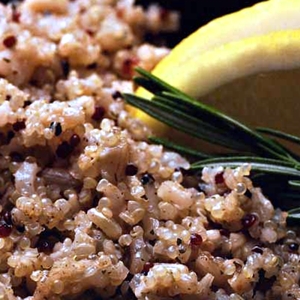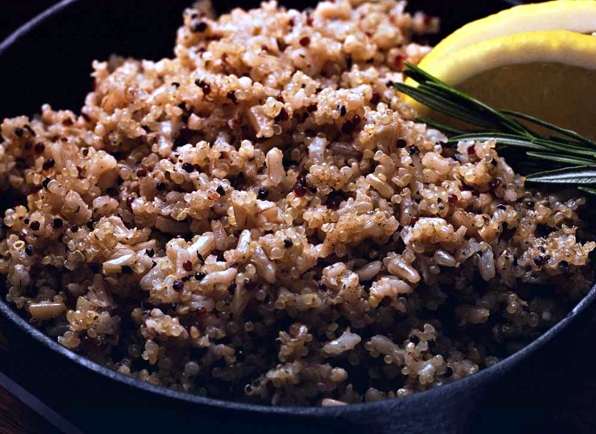We all know that Bran is beneficial in obvious ways. But, yesterday, we looked at a new study from Denmark that revealed some additional reasons why we should eat more Whole Grains. Now that major health benefits have been discovered, it’s time to take a closer look at the whole Whole Grains family…
A Great Whole Grain Side Dish: Multicolour Quinoa and Rice…
I imagine you are familiar with Whole Grain foods such as Bread, Cereals, Pasta and even Quinoa as an alternative to Rice. But did you know the Whole Grains Family goes far beyond that?
We all know about Wheat, Oats, Corn and Rice. But what about all the other Whole Grains?
Bulgar Wheat is better to known to many North Americans as ‘Cracked Wheat’. It’s a favourite in Whole Grain Breads, and in Middle Eastern specialties such as Tabbouleh Salad.
Rye is a popular Grain in Bread and other Baked Goods. And it’s the basis for world-renowned Canadian Rye Whiskey.
Wild Rice is a Whole Grain, even though technically it is not closely related to regular Rice. It’s been a favourite in North Americans since the native people discovered it thousands of years ago.
Anyone of Scottish extraction will tell you how indispensable Barley is to their traditional cuisine. And who among us has not had Beef and Barley Soup at least once?
Buckwheat is not really Wheat but that’s not important. Buckwheat Pancakes and other baked goods are a part of North American culture. That’s because it, like Wild Rice, originated here.
Quinoa is gaining in popularity as it becomes more main stream. Thank the TV cooking shows, especially those with ‘mystery’ ingredient baskets, for that. It originally starred in Eastern Cuisines but is now a popular side and a base for Veggie dishes.
Millet is also a full-kernel Whole Grain that has comes to us from other cultures where it has been known and enjoyed for millennia as both human food and animal feed.
Sorghum (also known as Milo), like Millet, is grown around the world and is popular in a number of applications, in North America mainly as animal feed.
Ancient Grains such as Einkorn, Spelt, Farro and Kamut are coming back into style as awareness grows about the drawbacks of processed modern grains. These are historical precursors of our familiar modern Grains and are held to have some nutritional advantages over them.
There are more! Here is a comprehensive list from the U.S. Whole Grains Council…
Just for fun…
Did you know that Popcorn is also a Whole Grain? Getting your Whole Grains need not be all work and no play!
That’s the rundown…
In the days to come, we’ll be bringing you some basic recipes using some of the more popular ‘forgotten’ Whole Grains…
~ Maggie J.


